On the morning of Sunday, Sept. 30, the e-mail came from U.S. Trade Representative Robert Lighthizer with his latest position on NAFTA.
Gathered in the office of Katie Telford, Prime Minister Justin Trudeau’s chief of staff, were the top officials tasked with managing Canada’s relationship with the volatile Trump administration: Foreign Affairs Minister Chrystia Freeland, chief NAFTA negotiator Steve Verheul, principal secretary Gerald Butts, Ambassador David MacNaughton and John Hannaford, the foreign policy chief in the civil service. A U.S.-imposed deadline for a deal was looming the following day, and the team had determined to make a full-court press.
And there, in Mr. Lighthizer’s e-mail, was what Canada had demanded all along: The United States would leave the Chapter 19 dispute resolution system completely untouched.
Ms. Freeland threw up her hands and cheered. “Woo hoo!”
This was the crucial moment – described to The Globe and Mail by four sources – of the 72-hour marathon of negotiations last weekend that sealed it. Before Sunday was out, the two sides had announced a tentative deal on the U.S.-Mexico-Canada Agreement, as the United States insisted NAFTA be renamed.
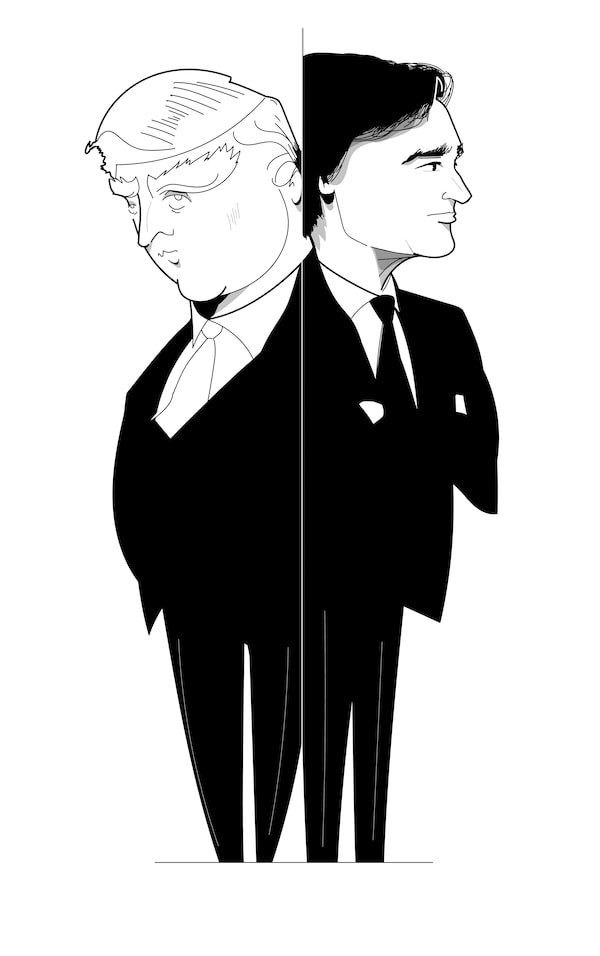
Antony Hare
Canada had marked Chapter 19 as its red line from the start; without it, Ottawa would refuse to sign a deal. The clause was symbolically important – the final victory in the original free-trade negotiations, in 1987 – and was essential to protect Canada from any capricious actions by an economic superpower 10 times its size.
Mr. Trump’s negotiating team held the issue back until the very end of an epic negotiation. Over the previous year and a half, Mr. Trump had verbally assailed Mr. Trudeau, threatened to end trade entirely between the two countries and pushed bilateral relations to a nadir. On more than one occasion, a resolution seemed close – only to see talks fall apart again, with US$1.3-trillion in annual trade hanging in the balance.
Canada’s strategy by turns involved taking a hard line and offering up significant compromises. It included one major shift halfway through the talks that ultimately paved the way to a deal. And it caused an early alignment between Ottawa and Mexico City to rupture as first one partner then the other sought a separate peace with Washington.
“I said when we began that there would be moments of drama,” Ms. Freeland told reporters the morning after the deal, in a moment of comical understatement. “And there have been.”
THE OPENING SALVOS
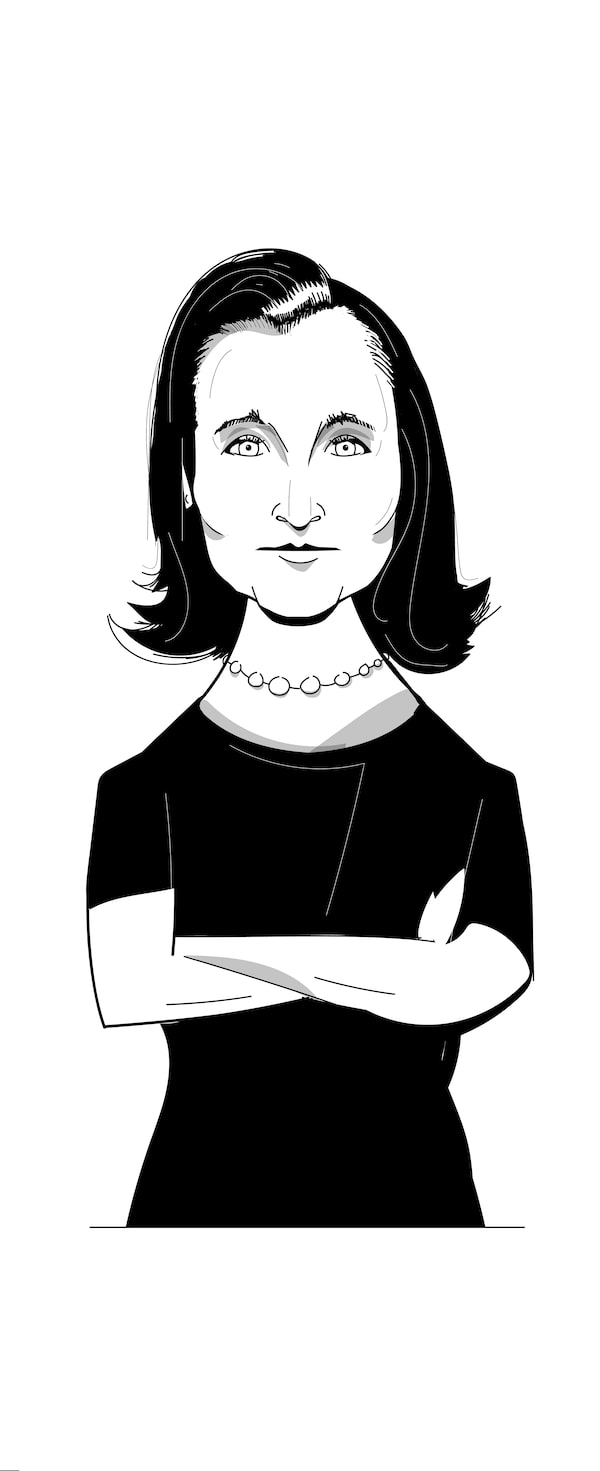
Chrystia Freeland, Minister of Foreign Affairs: "We are seeing proposals that would turn back the clock on 23 years of predictability, openness and collaboration under NAFTA."Antony Hare
If Chapter 19 was Mr. Trudeau’s red line, gaining access to Canada’s protectionist dairy market was Mr. Trump’s. But it hadn’t started like this.
During the presidential campaign, NAFTA had been a frequent target of Mr. Trump’s ire because it included Mexico, a country he scapegoated for everything from the opioid epidemic to lost manufacturing jobs in the Rust Belt.
Canada had flown under the radar, and in the first few months after Mr. Trump’s victory, everything seemed to be going smoothly. At Mr. Trudeau’s first White House visit, in February of last year, Mr. Trump declared that the trade relationship between Canada and the United States required only a few “tweaks.” And Mr. Trudeau’s staff successfully built rapport with Mr. Trump’s: Ms. Telford texted frequently with Jared Kushner, the President’s son-in-law; Mr. Butts got to know chief strategist Steve Bannon; and Ms. Freeland spoke frequently with Commerce Secretary Wilbur Ross. Free-trade-friendly members of the administration – including Gary Cohn, Dina Powell and Steve Mnuchin – also became key contacts.
The calm was short-lived: Over the course of just eight days that April, Canada became one of the President’s chief irritants.
On a warm spring afternoon in Wisconsin, before an announcement at a tool-making company, the President met with a group of farmers. They told him about a rule change in Canada’s tightly controlled dairy market that prevented them from selling ultrafiltered milk, a cheese-making ingredient, north of the border.
By the time he reached the podium, Mr. Trump had found a new enemy.
“In Canada, some very unfair things have happened to our dairy farmers,” he said. “It’s another typical one-sided deal against the United States.”
Early the following week, the United States imposed tariffs on Canadian softwood lumber – the latest development in a long-running trade dispute. The President seized on the fight as another example of the neighbouring country’s cheating ways. Canada, he said, was “very rough” and had “outsmarted our politicians for many years. … We don’t want to be taken advantage of.”
Mr. Bannon and other White House economic nationalists saw an opening, said two U.S. sources with knowledge of the administration’s internal deliberations. They drafted an executive order for Mr. Trump that would trigger NAFTA’s withdrawal provision, Article 2205.
To ensure the measure reached the President’s desk in the chaotic White House, Mr. Bannon engaged in some rhetorical subterfuge, the sources said: He told other staff the order would simply mandate a “review” of NAFTA.
When other White House aides discovered the order’s true purpose, they sounded the alarm. Sonny Purdue, the recently installed Agriculture Secretary, rushed over with maps showing Mr. Trump that the most reliably Republican farm states depended heavily on trade with Canada and Mexico for their livelihoods. Business leaders and Republican senators bombarded the Oval Office with pleas for the President to reconsider.
Mr. Kushner hastily arranged telephone calls with Mr. Trudeau and Mexican President Enrique Peña Nieto. Late on the evening of April 26, Mr. Trump announced he would not go through with the move.
Meanwhile, Mr. Kushner and Mr. Ross pressured Canada behind the scenes to change the ultrafiltered milk rule, recounted Canadian government and U.S. industry sources. Mr. Trump had seized on it, they told the Prime Minister’s advisers and Ms. Freeland, and giving in would solve the problem. But the Canadians held firm; they would make no unilateral concessions before negotiations even started.
The near-death experience – and standing up to the White House on dairy – emboldened the Canadians: They could hold their own against the disorganized Americans, who always seemed rocked by infighting.
Meanwhile, in addition to building relationships inside the U.S. administration, the Canadians pursued an outside pressure strategy: They deployed cabinet ministers, members of Parliament, premiers, business leaders and union presidents across the United States to meet with politicians. The goal was to remind them that their economic prosperity depended in large part on keeping a trade deal with Canada – and to convince them to lobby the White House not to destroy NAFTA.
A specialized unit in Mr. Trudeau’s office, led by Brian Clow, Ms. Freeland’s former chief of staff, co-ordinated the NAFTA file and Canada’s strategy across the government.
The start of negotiations, however, stalled for months as Mr. Lighthizer’s confirmation in his post got stuck in a gridlocked Congress. He wasn’t able to take office until May, kicking off a countdown to the talks.
ATTACK AND DEFENCE
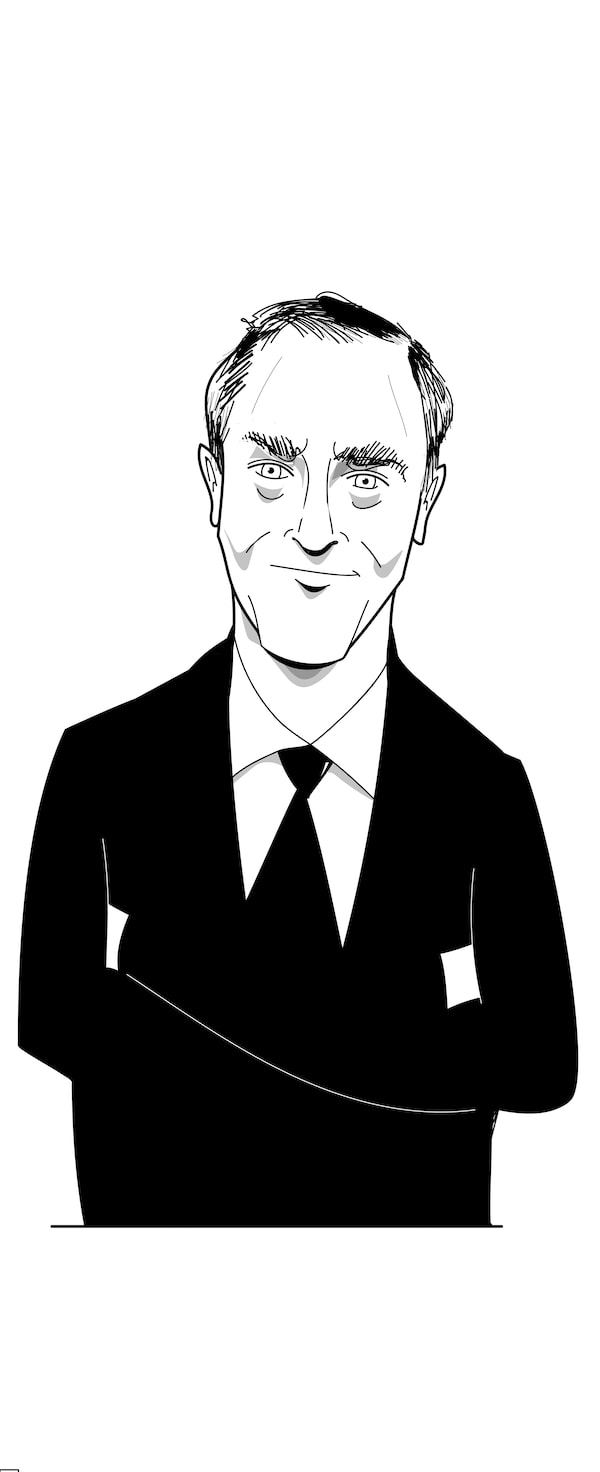
Robert Lighthizer, U.S. Trade Representative: "NAFTA has fundamentally failed many, many Americans and needs major improvement."Antony Hare
A lanky man with a shock of red hair and a distinctive nasal voice, Mr. Lighthizer dominated the room on a sweltering August day at a Washington Marriott. It was the first day of negotiations, and Mr. Trump’s trade chief – standing onstage next to Ms. Freeland and Mexican Economy Secretary Ildefonso Guajardo Villarreal – was determined to set an imposing tone.
“NAFTA has fundamentally failed many, many Americans and needs major improvement,” he said, warning that the President was “not interested in a mere tweaking of a few provisions.”
Over the next two months at four rounds of talks in three cities, Mr. Lighthizer laid out a string of impossibly tough demands: the gutting of all the deal’s dispute resolution mechanisms, including Chapter 19, which Canada had used to protect softwood from punitive tariffs; Buy American provisions that would cap bidding from Canadian and Mexican companies on U.S. government contracts; a requirement that 50 per cent of the components in vehicles manufactured in Canada and Mexico be American-made; a “sunset clause” that would automatically end the deal in five years unless all three parties agreed to extend it; and the abolition of Canada’s supply management system for dairy, eggs and poultry.
Canada refused to give an inch. According to sources in both countries briefed on the talks, Ottawa’s negotiators told their U.S. counterparts that these demands were complete non-starters – they couldn’t even work with them. Instead, Canadian negotiators spent bargaining sessions giving detailed presentations to their U.S. counterparts about how the proposals would hurt U.S. industries.
Canada, meanwhile, made a few demands of its own. It asked for commitments to fight climate change, protect Indigenous rights, ensure women’s equality and dismantle anti-union “right to work” laws in the United States.
Some on the U.S. side were exasperated by the Canadians. Why would they not work with the U.S. proposals, they complained? And what was the point of introducing social policy into a trade deal?
Particularly vexing for the United States was Canada’s decision to fight back on autos. The Americans had expected Ottawa to team up with the Trump administration against Mexico. After all, both countries had lost manufacturing jobs to lower-wage factories in less affluent countries.
“The U.S. was genuinely surprised by Canada’s position on autos,” said Daniel Ujczo, an Ohio-based trade lawyer with Dickinson Wright who represents clients in the auto, steel and dairy sectors. “If the U.S. was initially going to split the NAFTA parties, it was going to side with Canada.”
Some U.S. negotiators, however, seemed to agree with the Canadians. Two government and industry sources with knowledge of the mood at the tables said career U.S. Trade Representative staff – ardent free-trade supporters – were apologetic in presenting Mr. Lighthizer’s protectionist demands. In some cases, when the Canadians and Mexicans lectured U.S. negotiators on the folly of the U.S. proposals, the Americans made clear that they did not disagree.
Flavio Volpe, the head of Canada’s auto parts industry group and an adviser to the Canadian negotiating team, said it would have been absurd for Canada to concede on autos at the start of talks. For one thing, it took the United States two full months after the opening of negotiations to present a fully formed position.
“I know the Americans were upset by Canada’s position, but who would start a negotiation they didn’t ask for by conceding?” he said.
The bargaining room tensions exploded into the open on the final day of that October round. At a joint news conference at the General Services Administration building in downtown Washington, Mr. Lighthizer and Ms. Freeland traded blows in front of reporters.
“We are seeing proposals that would turn back the clock on 23 years of predictability, openness and collaboration under NAFTA,” Ms. Freeland warned, accusing the Trump administration or trying to “undermine NAFTA” with “troubling” demands and a “winner-take-all mindset.”
Mr. Lighthizer fired back.
“Frankly, I am surprised and disappointed by the resistance to change from our negotiating partners,” he said. “Countries are reluctant to give up unfair advantage.”
THE AUTOS COMPROMISE
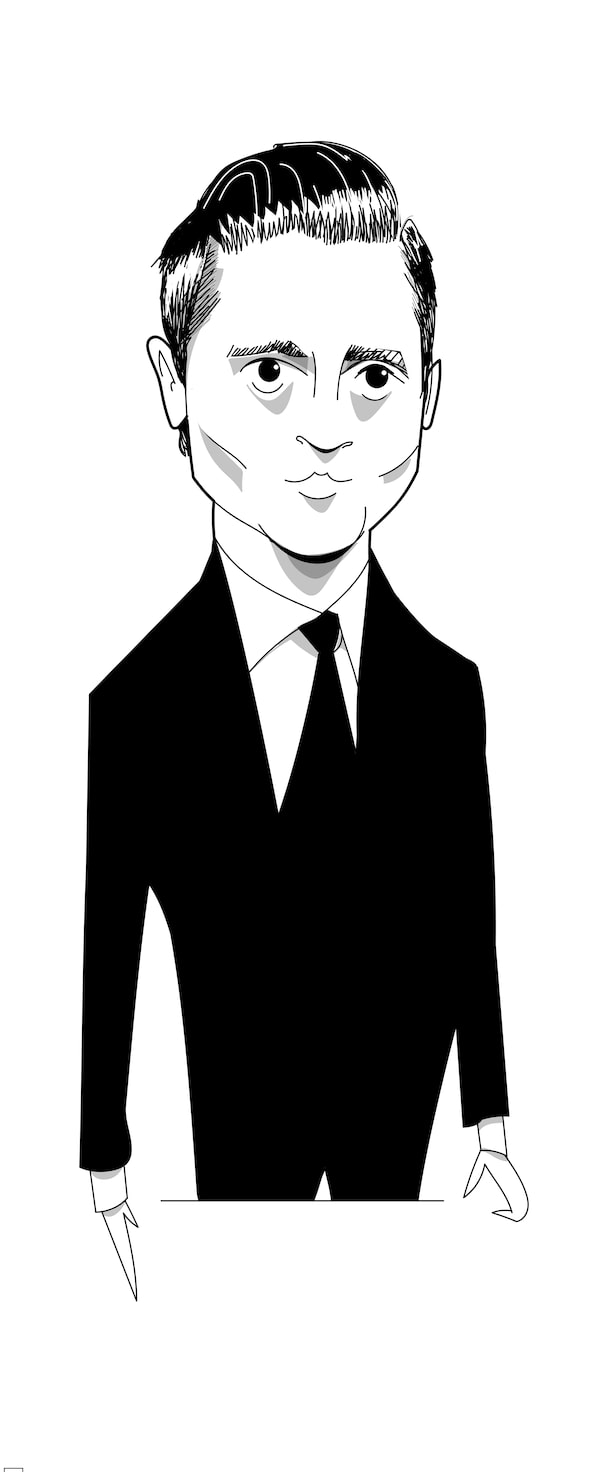
Trade partners worked to finish a deal in time for departing Mexican President Enrique Peña Nieto to sign into law before leaving office in late November.Antony Hare
As 2017 drew to a close, Canada quietly executed a major change in strategy. Rather than fight Mr. Trump’s toughest demands, Ottawa determined to start proposing compromises.
At a series of technical meetings in Washington in December, Canada floated ideas for overhauling auto rules short of imposing a U.S. content requirement, said three government and industry sources in all three countries. These ideas were discussed in further detail at a negotiating round the following month in Montreal.
One Canadian concept in particular seized Mr. Lighthizer’s interest, the sources said: Tying automotive content to wages. Mexico had long attracted auto plants by allowing employers to pay a third or less than U.S. and Canadian workers earned. Mandate that a certain amount of car parts had to be made in factories paying a specific wage or more and you could undercut Mexico’s ability to compete for jobs.
In March, Mr. Lighthizer dropped his proposal for 50-per-cent U.S. content in vehicles and replaced it with a demand that 40 per cent of the content be made in factories paying at least US$16 an hour.
It was a major breakthrough. And in May, with a deadline looming for an agreement that could be voted on by the current Congress, Canada saw the chance for a quick deal. In exchange for agreeing to the U.S.’s auto position, opening up the dairy market and resolving a handful of smaller issues, Mr. Trudeau’s officials proposed, the United States could drop its other protectionist demands, said three Canadian government and U.S. industry sources with knowledge of the manoeuvre.
Mexico, meanwhile, was unhappy with Canada’s moves, said government and industry sources in the three countries. It believed it had an understanding with Ottawa, as NAFTA’s two junior partners, to work together in thwarting the protectionist behemoth between them.
Mr. Guajardo said Canada presented the United States with ideas, including the wage proposal, without running them by Mexico first. And he was taken by surprise when Mr. Lighthizer threw it down in negotiations.
“It was a very tough week for us in April, because the full week we were trying to balance a proposal that had not been discussed with us,” he said in an interview in his Mexico City office.
One Canadian official disputed Mr. Guajardo’s account, saying the wage idea was discussed at the negotiating round in Montreal, not sprung on the Mexicans in the spring. The official conceded, however, that Mr. Guajardo may be correct that the Canadians discussed the wage idea with the Americans prior to the Montreal talks without informing Mexico.
The official said Ottawa also kept Mexico informed of its May attempts at reaching a deal with the U.S. Ms. Telford and Mr. MacNaughton, Canada’s ambassador to the U.S., briefed Mexican Foreign Secretary Luis Videgaray Caso in the backyard of Mr. MacNaughton’s residence in Washington, the source said. Ms. Freeland, for her part, told Mr. Guajardo what was going on.
Canada’s gambit, in any event, was all for naught: While some in the U.S. administration – including Mr. Kushner, Mr. Mnuchin and Larry Kudlow, who had replaced Mr. Cohn as economic czar – were interested in a deal, Mr. Lighthizer insisted it was not good enough, the Canadian government and U.S. industry sources said.
Shortly after, Mr. Trudeau told reporters, he made a last-ditch attempt to set up a meeting with Mr. Trump to sort out a deal leader to leader. But it foundered when Vice-President Mike Pence called the Prime Minister to inform him that such a meeting would only happen if Canada first conceded on the U.S. demand for a sunset clause. Mr. Trudeau refused.
DIVIDE AND CONQUER
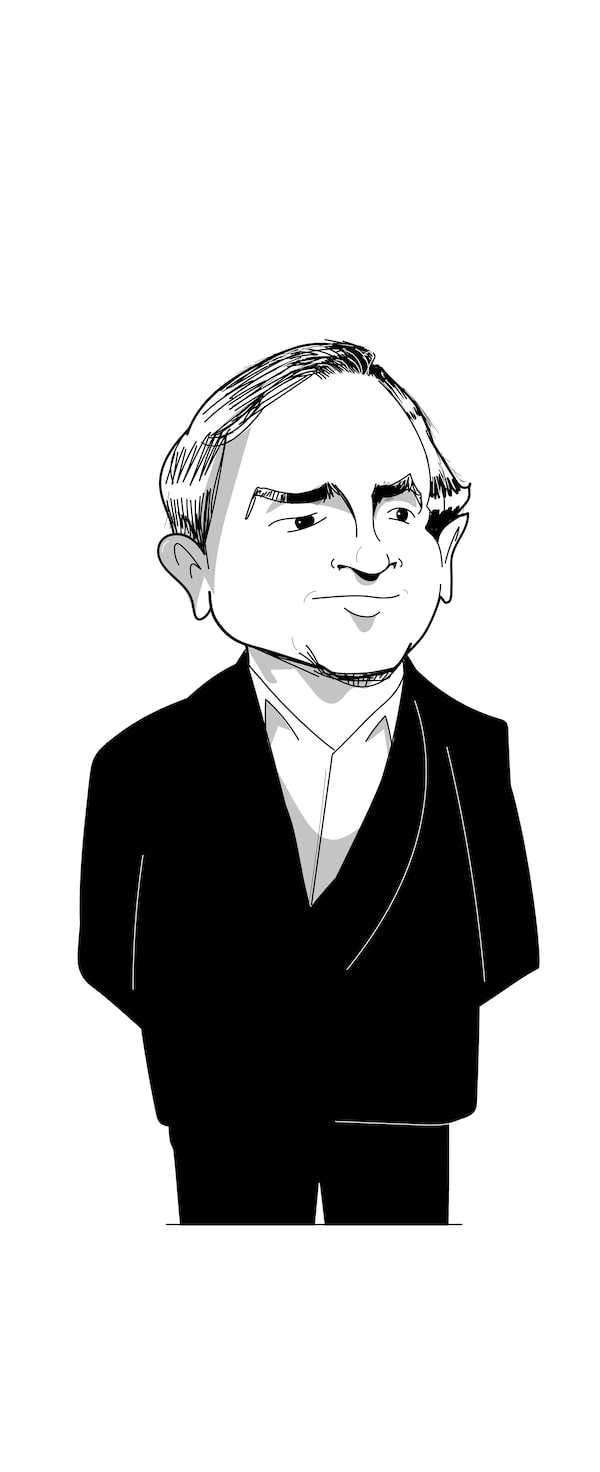
David MacNaughton, Ambassador to the United States: "[Canada] will not accept the gutting or removal of the Chapter 19 dispute-settlement mechanism."Antony Hare
In early June, talks reached their lowest point since Mr. Lighthizer and Ms. Freeland had fought onstage the previous fall.
First, Mr. Trump imposed tariffs on Canadian steel and aluminium, and Canada fought back with levies on $16-billion worth of U.S. goods. Then, the President took umbrage at a news conference after a G7 meeting in Charlevoix at which Mr. Trudeau insisted Canada would “not be pushed around” by U.S. tariffs.
“Very dishonest & weak. Our Tariffs are in response to his of 270% on dairy!” Mr. Trump tweeted.
The following week, Ms. Freeland accepted Foreign Policy magazine’s Diplomat of the Year award in Washington. In her speech, she linked Mr. Trump’s tariffs to the international rise of nationalism and authoritarianism threatening Western democracy.
“You may feel today that your size allows you to go mano a mano with your traditional adversaries and be guaranteed to win,” she warned the U.S. President at a banquet mere blocks from the White House. “But if history tells us one thing, it is that no one nation’s pre-eminence is eternal.”
At a meeting with Mr. Lighthizer the following day, she handed him a copy of the speech.
The G7 dustup and Ms. Freeland’s speech slowed progress on a deal, said one Canadian source briefed on the talks by both sides. While Mr. Lighthizer got along fine with the Foreign Affairs Minister, the source said, others in the White House “despised her” and took offence to the speech. “That’s the reason all of this stuff didn’t fly right away,” the source said, adding there was “bad blood” for some time after.
But Derek Burney, the former chief of staff to prime minister Brian Mulroney who played a key role in the original free-trade negotiations, said Ms. Freeland’s comments have to be kept in perspective.
“Anything we did was a fly speck compared to the insults and bombast we got from Donald Trump,” he said in an interview. “I thought our response, for the most part, was pretty restrained and pretty civil.”
Over the summer, Mr. Lighthizer reconvened talks. But this time, it would be a two-way affair: The United States and Mexico sat down without Canada. Mr. Guajardo insisted publicly that the negotiations were merely designed to sort out the auto-content issue – which Canada had already agreed on with the United States – and bilateral matters such as Mexican produce exports to the United States.
But when talks concluded in late August, the United States and Mexico emerged with a nearly complete deal and pressured Canada to sign on in short order. Both Mr. Videgaray and Kenneth Smith Ramos, the Mexican chief negotiator, warned that they were ready to go ahead with a bilateral trade pact with the United States and cut Canada out entirely.
At a tense meeting that night at the Canadian embassy in Washington, Ms. Freeland confronted Mr. Guajardo over the betrayal. When talks began, she reminded him, Canada had been clear that it would not throw Mexico under the bus – and now the Mexicans had done just that to Canada.
Mr. Guajardo interrupted, raising Canada’s move on autos earlier in the year. Pointing at Mr. MacNaughton, said one source with knowledge of the conversation, he accused the ambassador of secretly discussing the wage idea with the Americans behind Mexico’s back.
“It was a very tough moment. In a way, the first reaction was ‘You guys are not giving us much time to work on this,’” Mr. Guajardo recalled of the Canadian response to Mexico’s deal with the United States. “But then I very politely reminded my colleagues of the April moment.”
ENDGAME
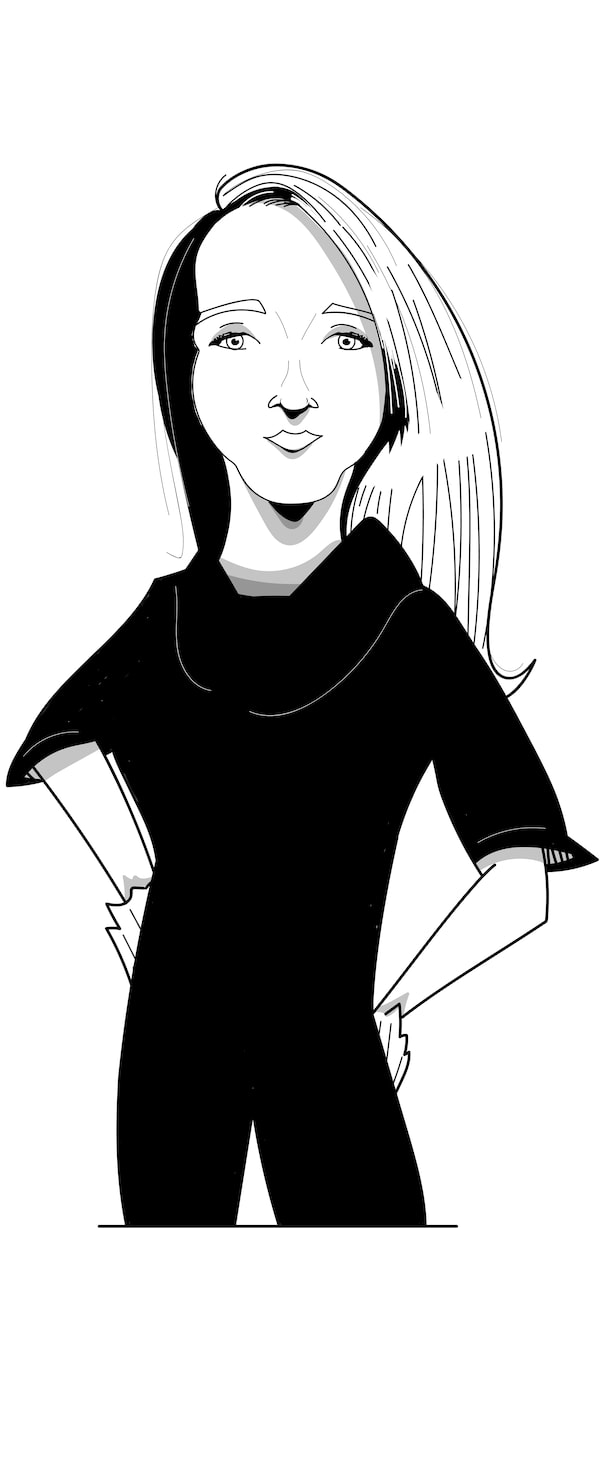
Katie Telford, chief of staff to Prime Minister Justin Trudeau, built a rapport with Donald Trump's son-in-law Jared Kushner, and made frequent trips to Washington to press Canada's agenda.Antony Hare
For the next month, Ms. Freeland trekked every week to Washington – usually accompanied by Ms. Telford, Mr. Butts and Mr. Clow – in a bid for a deal. The Canadians quickly made clear that they would not simply agree to everything Mexico had, but intended to renegotiate much of it. The Mexicans, for instance, had agreed to a deal that did not include Chapter 19. And they conceded more on pharmaceutical patents than Canada wanted to give.
Mr. Trump set an Oct. 1 deadline. He wanted to deliver a text of the deal to Congress by then to set up a final signing of the agreement at the end of November. And he threatened to hit Canada with auto tariffs if they didn’t quickly conclude talks.
The two sides were locked in a stand-off, trying to determine how little they could give while still extracting concessions from the other side. The Canadian side was confident that Congress would not approve a two-country deal and that Mr. Trump would not move ahead with auto tariffs, which were projected to cause hundreds of thousands of job losses in both countries.
“It was a mutual stare-down,” Mr. Burney said. “Each side decided what the bottom line on the other side was and decided what they could live with.”
At the United Nations General Assembly, Mr. Trump and Mr. Trudeau didn’t meet – save for a single, awkward handshake – solidifying the impression of listless talks and a strained relationship. At his closing news conference, the President said he had purposely refused to meet with the Prime Minister, made public his dislike for Ms. Freeland and repeated his threat to slap tariffs on Canadian-made autos if a deal was not reached.
“We’re very unhappy with the negotiations and the negotiating style of Canada. We don’t like their representative very much,” he said. “We’re thinking about just taxing cars coming in from Canada … Canada has treated us very badly.”
But over the next 72 hours, everything suddenly came together.
First, on Thursday, the Canadian team sent the Americans a document that laid out all of its negotiating positions – and all of the United States' – in a bid to highlight the gaps. One source said the Canadians also indicated to the United States that they would be willing to give more on dairy than they had previously offered. Another said they reiterated to Mr. Lighthizer that Chapter 19 was Ottawa’s red line.
On Friday, Mr. Lighthizer came back with a counterproposal. Both sides cleared the decks for a weekend push. The United States and Mexico cancelled plans to publish a text of the bilateral deal that night, hoping they could include Canada in it shortly. Ms. Freeland cancelled a Saturday speaking slot at the UN to rush back to Ottawa. Mr. MacNaughton also headed to the capital.
Talks continued Saturday. Ms. Freeland, Ms. Telford, Mr. Butts, Mr. MacNaughton, Mr. Verheul and Mr. Hannaford gathered in Ms. Telford’s office in the Prime Minister’s Office building across the street from Parliament Hill.
They spoke with Mr. Lighthizer, Mr. Kushner and the U.S. negotiating team – gathered in Mr. Lighthizer’s offices in the Winder Building near the White House – by speakerphone. The two sides traded written proposals over e-mail.
By Saturday night, the outlines of a deal were on the table. Mr. Lighthizer and Mr. Kushner briefed Mr. Trump, who gave them the go-ahead to close the next day, said one source with knowledge of the U.S. discussions. However, the source said, Mr. Trump told them not to go ahead with a deal to lift the steel and aluminium tariffs.
Mr. Lighthizer gave the Canadians a verbal indication Saturday that he would agree to leave the Chapter 19 dispute resolution system untouched. His written confirmation came Sunday morning.
“When we realized that we had an intact Chapter 19, that was where I started to realize that, okay, I think we’re going to be able to get to a place,” Mr. Trudeau later told reporters.
One of the final issues to be finished was a side deal in which Mr. Trump guaranteed to exempt Canadian autos below a specific quota from any future tariffs. The U.S. wanted to set the quota at 2.3 million vehicles annually – about 500,000 more than Canada currently exports – but Ottawa requested it be bumped to 2.6 million, said one source with knowledge of the discussions. The U.S. agreed.
As dark fell on Ottawa and Washington, Mr. Trudeau arrived at the office and convened his cabinet for a final sign-off on the deal. Mr. Lighthizer and Mr. Kushner took the details to Mr. Trump for approval.
Shortly before midnight, both sides announced the new pact.
In the end, the United States had dropped or softened all four of the protectionist demands Canada found most abhorrent: the 50-per-cent U.S. content requirement in autos was transmuted into the rule mandating higher wages; the five-year sunset clause was switched to a 16-year sunset with a rolling, six-year review and renewal process; the attempt to end Chapter 19 dispute resolution was jettisoned entirely, as was the Buy American demand.
But Canada had conceded on almost every conventional trade irritant of the past decade: dairy, pharmaceutical patents, the favouring of B.C. wines over imported ones in the province’s grocery stores and the airing of Super Bowl commercials, among others. Canada also agreed to a clause designed to discourage itself from pursuing a trade deal with China – Mr. Trump’s top enemy on trade. And steel and aluminium tariffs remain in place.
One Canadian source credited Mr. Kushner, and particularly his relationship with Ms. Telford and Mr. Butts, for pushing talks forward when they became logjammed. “There isn’t much light between him and the old man. He was indispensable,” the source said.
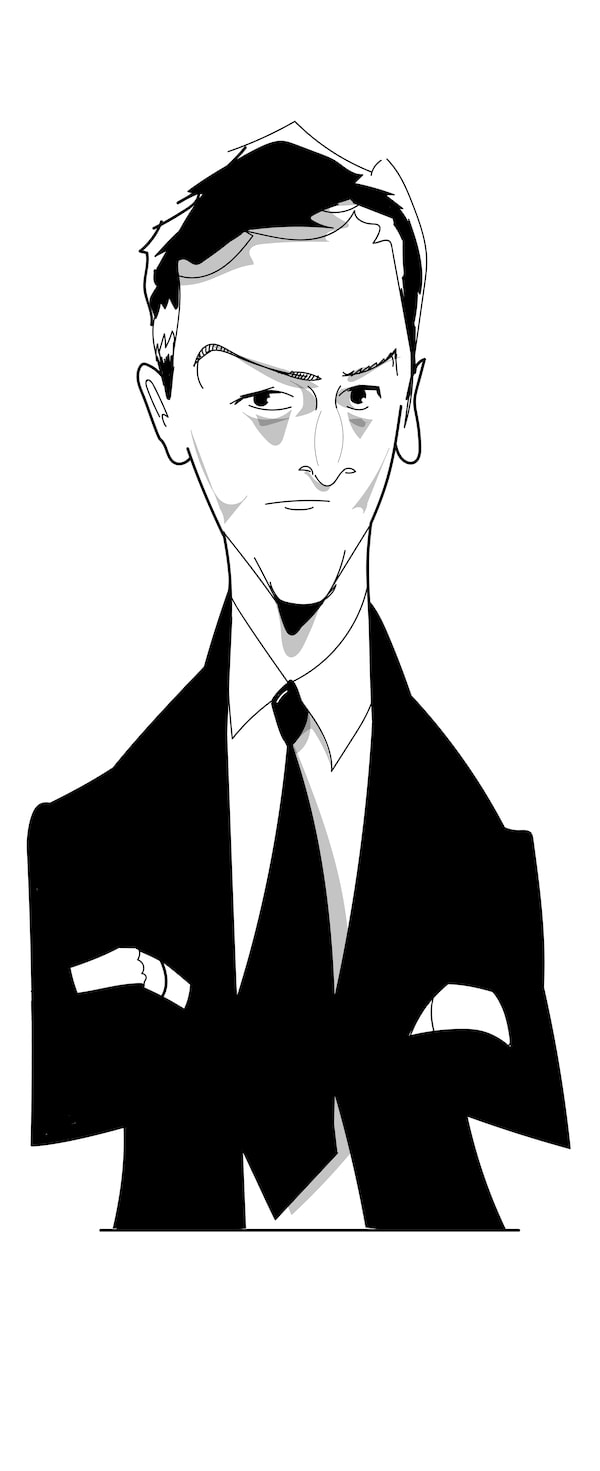
Presidential adviser and son-in-law to Donald Trump, Jared Kushner pressed Canada early in the talks to open its dairy market, and kept talks moving at key times through his relationship with Mr. Trump.Antony Hare
Another said Mr. Trudeau’s decision in early September to publicly plead the case for Chapter 19 on an Edmonton radio station – an interview in which he pointedly said the clause was necessary because Mr. Trump “doesn’t always follow the rules” – finally convinced the Americans that Canada was serious about the provision.
Two U.S. sources with knowledge of the talks said Mr. Lighthizer also made clear in the closing days that Mr. Trump’s Oct. 1 deadline was real and that they were serious about auto tariffs. But Canadian officials denied there was ever such a threat or that they even took the prospect of tariffs seriously.
One Canadian official confided that, policy purposes aside, there was another reason Mr. Trudeau’s advisers had marked Chapter 19 from the start as the hill to die on: They were confident Mr. Trump would not. Whatever happened in the negotiations, the official said, Canada was certain the U.S. would ultimately concede dispute resolution, giving Ottawa something substantial to claim as a victory.
It was a gamble that paid off rhetorically, though some argued it came at a cost to the deal itself – and explained how the talks ended.
By advertising Chapter 19 as a red line, some observers said, the Canadians gave Mr. Lighthizer a point with which to inflict pain. He simply held out until he felt he had won enough from Ottawa for a satisfactory deal. As soon as he conceded it, the agreement was made.
“The U.S. was just holding back Chapter 19 until the end to squeeze out every last concession,” said Mr. Ujczo, the trade lawyer. “And it worked.”
With a report from Eric Atkins